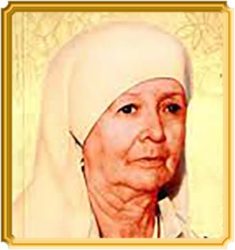The Perfect Role-Model Of Discipleship
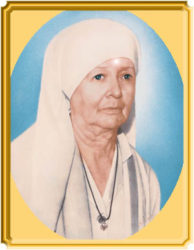
Edith Anne Ruth D’Evelyn Bissett, better known as Sister Gyanamata (July 04, 1869- Nov.17, 1951), was Yogananda’s most advanced woman disciple. Already in her previous life, he stated, she had attained nirbikalpa samadhi, the highest state of God-union. In this incarnation she achieved complete liberation (moksha, mukti). Very few souls on earth reach that supreme state.
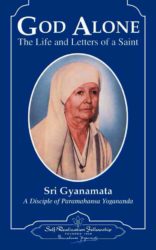 This article is almost entirely based on the inspiring book about her life, God Alone, published by Self-Realization Fellowship (all quotes, unless otherwise marked, are taken from it). It is a true gift, as without it she would have remained almost unknown to the world: Sister Gyanamata was not a public figure at all, but lived hidden away from the public eye, “playing an all but obscure, behind-the-scenes role on this earthly plane.”
This article is almost entirely based on the inspiring book about her life, God Alone, published by Self-Realization Fellowship (all quotes, unless otherwise marked, are taken from it). It is a true gift, as without it she would have remained almost unknown to the world: Sister Gyanamata was not a public figure at all, but lived hidden away from the public eye, “playing an all but obscure, behind-the-scenes role on this earthly plane.”
Yogananda spoke unmistakably about her: “She is a great saint—a great spirit, and that is why she is with God.” He explained that she ranked with the greatest of the well-known Christian saints, such as St. Francis. He added that “she has the same characteristics of Saint Teresa [of Avila].”
The Guru, then, had a male Saint Lynn and a female Saint Gyanamata.
He publicly announced their leading status: “Of all the women I have met in America, I think the one who has found highest favor with God is Sister Gyanamata. Of all the men I have met here, I think the one who has found highest favor with God is St. Lynn.”
He therefore counselled his devotees: “Sister and Saint Lynn I have always put before you as examples… Follow the example of Saint Lynn and Sister, and go all the way. That is the door to heaven.”
In fact, don’t they seem the father and mother of Yogananda’s large spiritual family?
At any rate, Sister Gyanamata was, and still is today, Yogananda’s declared role model: “Follow Sister’s attitude in everything. She is my ideal.”
In that case, how can we follow her, practically speaking?
Gyanamata’s name was a perfect expression of who she was: a “mother of wisdom”. Let’s have a brief look at eight central aspects of her wisdom, which we may try to emulate.
-
God-love
 Her first and foremost wisdom was her chosen motto, ideal, and life-direction, which hung, written, in her room: “God Alone.” Nothing else, she knew, really matters. Will anything else ever bring us true joy? Each night before falling asleep, looking at the spiritual eye, she prayed: “Now, Thee alone I seek. Send what is best.” Her unwavering one-pointed dedication to God is a timeless example for all devotees to follow.
Her first and foremost wisdom was her chosen motto, ideal, and life-direction, which hung, written, in her room: “God Alone.” Nothing else, she knew, really matters. Will anything else ever bring us true joy? Each night before falling asleep, looking at the spiritual eye, she prayed: “Now, Thee alone I seek. Send what is best.” Her unwavering one-pointed dedication to God is a timeless example for all devotees to follow.
-
Guru-attunement
Not far behind in importance is the second, and correlated, element of Sister Gyanama’s wisdom: utter surrender to the Guru. Her trust in him was boundless. When a fellow disciple found herself in deep trouble, Sister’s advice was clear and unforgettable: “Take firm hold of the Guru’s robe, and let nothing unclench your fingers.”
It might be beneficial for devotees to meditate on her resolve regarding Yogananda: “I have, then, these ambitions: To be near you, which is the desire that brought me from Seattle. To serve you; to be loyal to you to the last drop of blood in my body; never to fail you through carelessness. To make as perfect a manifestation of your teaching as possible. To go quickly at just the right moment. To leave nothing unfinished.”
All this resulted in a perfect inner attunement with his cosmic consciousness. She sometimes signed her letters devotionally with “Gyanamata of Yogananda.” Again, doesn’t her example shine as a precious role-model for all generations of disciples to come?
-
Humility
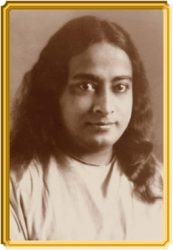 A third essential part of her wisdom, once again correlated, was her profound humility. Imagine: she was 23 years older than Yogananda. Age-wise, she could have been his mother. Visualize her at the mature age of 55, meeting a young yogi of 31 (see photo, Yogananda in 1924). Does the ego bow easily to such a minor? No. But her wisdom did so, humbly and unreservedly, perceiving him as a Christ-like being.
A third essential part of her wisdom, once again correlated, was her profound humility. Imagine: she was 23 years older than Yogananda. Age-wise, she could have been his mother. Visualize her at the mature age of 55, meeting a young yogi of 31 (see photo, Yogananda in 1924). Does the ego bow easily to such a minor? No. But her wisdom did so, humbly and unreservedly, perceiving him as a Christ-like being.
She allowed no trace of ego to tarnish her pure humility: not the fact that she was a highly intelligent and independent person; nor that she was highly knowledgeable and erudite: the Bissett private library was one of the largest on the Pacific Coast; or that she came from a high social background, being the dignified wife of a prominent university professor and lawyer.
In other words, no “pride of pedigree” remained, which is one of the eight ‘meannesses of the heart’ as described by Sri Yukteswar. Instead, Gyanamata, through her life, showed all devotees how to develop a deep, pure, and sincere sense of humility.
-
Being an instrument
However, did her deep-seated humility cause her to suppress her innate intelligence and brilliance? Not at all. Rather, she used it to serve others as a living channel of her Master. Her letters, in fact, shine with her particular brightness, power, and uniqueness. She didn’t hide it.
And that takes us to a fourth element of her distinctive wisdom: discipleship also means trying to be an active channel for one’s Guru, who needs willing hands, hearts, and minds as his instruments for his mission – or simply for his vibrations of love and light – here on earth.
She wrote: “My glory is in God himself, and in that Master who has taken my weakness and turned it into a channel through which his grace may flow to others.”
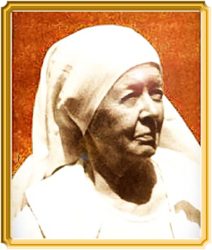 With her typical wit, she described herself to Yogananda in this way: “For a long time I have considered myself as a storage battery of your holy vibrations.” That “battery” was powerfully charged, and others came to benefit from its divine current. Visitors to Mt. Washington or Encinitas experienced physical healing just by being in her presence. Such spontaneous healings are one of the signs of a true saint. When thanking her, she explained to them the simple mechanics of it: “It was the Guru’s healing – through me.”
With her typical wit, she described herself to Yogananda in this way: “For a long time I have considered myself as a storage battery of your holy vibrations.” That “battery” was powerfully charged, and others came to benefit from its divine current. Visitors to Mt. Washington or Encinitas experienced physical healing just by being in her presence. Such spontaneous healings are one of the signs of a true saint. When thanking her, she explained to them the simple mechanics of it: “It was the Guru’s healing – through me.”
Here is another matter for consideration: of course, Sister Gyanamata was keenly aware of Yogananda’s worldwide mission, as he was constantly touring, lecturing, writing, trying his utmost to reach the entire planet with his liberating message of Kriya Yoga. Why then, we may ask, did Sister Gyanamata never act as an active instrument for her Guru’s powerful outward thrust to build a global work, to expand his teachings everywhere, spreading his message all over the Earth?
The answer is: she would have loved to do so, but was simply not able to. In a letter she wrote to him: “I wish, for your sake, that I were a man, young and strong, ready to live a long life of unceasing effort to aid you in spreading the truth over the whole world.”
Yogananda was deeply touched and answered: “Your very dear letter I read with tears. O yes, many times I wish you were a young man – living here – for I feel you could have done so much.”
Was he, then, a little disappointed about her inability to help him outwardly? Of course not. Every disciple, he explained, has his own unique duty: “Each one of you are like the fingers of my hand. Each finger has its particular strength to perform its individual duties, but each finger is equally valuable to make the hand whole.” (Durga Mata, Trilogy of Divine Love)
Sister Gyanamata’s task, in other words, simply wasn’t to be a channel for her Guru’s outer expansive efforts. Her mission was to be a shining role-model for the inner life of a true devotee.
In fact, Yogananda continued in his above letter: “I feel you have done a hundred times more than my expectation, and of all my dear ones here, Mr. Lynn, you and a very few others have fully lived up to my expected standard of highest spiritual life.”
-
Regular meditation
A fifth aspect of her wisdom is that it was never solely mental, but born of her deep inner realization, which gave her a profound understanding of God, of the soul, of life, and of the spiritual path. Yogananda in fact described her in his Autobiography of a Yogi like this:
A “lady of sweet visage and deep realization who, during my absence, had been in charge at Mt. Washington.”
How can we follow her footsteps and develop such “deep realization”? By regular meditation. She wrote: “The techniques of concentration and meditation, which you have learned, and the technique of Kriya Yoga, will do quickly what surrender to the will of God, devotion, and study of the Scriptures take years to accomplish.”
Gyanamata – lovingly called “Queen of Wisdom” by her Guru – rose at 4AM or earlier, to read a little and to meditate for hours. Did meditation come easily to her, as she was a highly evolved soul? Not at all, surprisingly. Often it was a “titanic struggle”, as it is for most devotees. Nor did she experience many meditative phenomena.
Her meditative strategy is a shining example of wisdom: often she sat for a long time without getting any noticeable results. But she continued with her efforts, until finally the divine touch came. She explains her method like this: “I often compare my attempts at meditation to pushing a boat down the beach onto the water – one pushes and pushes, till suddenly it is afloat and the current catches it.”
Isn’t that a marvelous example for all generations to come? Let’s learn to keep pushing our meditative boat!
-
Right attitude
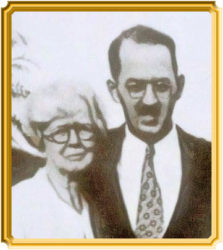 Born of that inner meditative realization was a sixth element of her precious wisdom: a crystal-clear understanding of the right attitudes of a devotee. Sister Gyanamata didn’t only understand them, but lived them to perfection. In her 20 years in Yogananda’s ashram, for example, she often suffered physically. Yet her soul-joy prevailed, her spiritual attitude shone, and her inspiring attitude will live on forever.
Born of that inner meditative realization was a sixth element of her precious wisdom: a crystal-clear understanding of the right attitudes of a devotee. Sister Gyanamata didn’t only understand them, but lived them to perfection. In her 20 years in Yogananda’s ashram, for example, she often suffered physically. Yet her soul-joy prevailed, her spiritual attitude shone, and her inspiring attitude will live on forever.
She told other disciples: “If I were to give you the gift that I would like best of all to offer you, it would be the right attitude toward God and Guru; toward life; toward your work; toward others.”
Let’s look at a little selection of the golden attitudes she conveyed, thinking how it applies to our own life.
- An unflinching willingness to change: “Change no circumstances of my life. Change me.”
- Self-honesty and self-analysis: “I cannot be what I want to be until I face what I am.”
- Assessing one’s spiritual development: “I have come to measure spiritual advancement, not alone by the light that surrounds one when he meditates or by the visions he has of saints, but by what he is able to endure in the hard, cold light of day.”
- Courage when confronting trials and tests: “I always remember this truth when I mentally try to find a way to escape from something that seems too hard for me. I think then: ‘I am escaping, not overcoming.’”
- Stopping the thought of self: “Do not ask, ‘What will I get out of it?’ Say instead, ‘How I can help?’”
- Resisting the thought of unfair and unjust: “You can have only your own; and your own will surely come to you. Indeed, you cannot escape it.”
- Tests, trials, difficulties are necessary for our evolution: “Difficulties develop steel in the muscles of our soul.” And: “If we never had anything painful or alarming to face, if it were just joy in God all the time, what would we be? Spiritual cream puffs.”
- Never stagnate: “That is my only ambition. More and better.” It applies to everything: service, sadhana, devotion, self-transformation, surrender, etc.
- Pure devotion is the highest wisdom: “[God] can be made to talk if your love is deep enough. Do your Kriya Yoga deeply and talk to Him as I am talking to you. Love Him more. He is invisible, but you have to make Him talk. And if your meditation becomes ‘chronic’ enough, and your love becomes ‘chronic’ enough, He will be with you always.”
The following four points maybe constitute her essential advice for the spiritual path:
“- See nothing, look at nothing but your goal, ever-shining before you.
– The things that happen to us do not matter; what we become through them does.
– Every day accept everything as coming to you from God.
– At night, give everything back into His hands.”
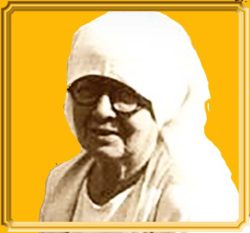 Sister Gyanamata lovingly shared these precious attitudes with her fellow devotees, as their spiritual mother. Indeed, even though she was called “Sister” by everyone, the appellation “Mother” seems far more appropriate, as Gyanamata, means “mother of wisdom”. In addition, she was, for example, 45 years older than Daya Mata, and 61 years older than Mrinalini Mata.
Sister Gyanamata lovingly shared these precious attitudes with her fellow devotees, as their spiritual mother. Indeed, even though she was called “Sister” by everyone, the appellation “Mother” seems far more appropriate, as Gyanamata, means “mother of wisdom”. In addition, she was, for example, 45 years older than Daya Mata, and 61 years older than Mrinalini Mata.
She was, and is, a true mother for all of Yogananda’s devotees.
-
The last phase of life
A seventh element of Sister Gyanamata’s deep wisdom may appear less central, but in truth is crucial for all spiritual seekers: “The last chapter in life is the most important.”
Before meeting Yogananda, she had been a normal householder. Yes, she had always been a deeply religious and spiritual person, but she was living quite a common existence being a mother, a wife, a neighbor; a regular member of society. Hers hadn’t been a life of meditation, constant prayer, inner dedication, and service to God. Everything completely changed when, at the mature age of 55, she met Yogananda. By the time she came to live near Yogananda she was already 61, and when she moved to his ashram, 62. That’s often the time in life when women can go into early retirement. But that “last chapter” proved decisive.
The same is true for everyone. Our task, then, if we want to follow Sister Gyanamata, is to make our spiritual life shine especially during its last chapter. If our past has not been very impressive so far, let’s just smile about it. It wasn’t the most important time of our life. The future will be brighter, and it will count greatly.
-
Intensity in dedication and service
Sister Gyanamata is described by Daya Mata as being physically “delicate, almost fragile.” Inwardly, however, her spirit was that of a lion. Spiritual intensity was her hallmark. It is the quality of all saints, to be developed by all who want to walk in their footsteps.
Indeed, why was the last part of her life so successful, spiritually speaking? It was due to that intensity, which she expressed through all the ups and downs of life (she too had her downs; for example, she writes “…if I am depressed and weary…”).
All too often neophytes enter the spiritual path with great fire and vigor, but then slow down as the years pass by: their intensity relaxes, their fire gradually grows tepid, habit takes over.
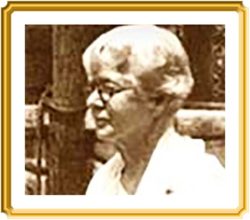 Not so with Sister Gyanamata. Swami Kriyananda writes that she “displayed a respect for Master so undeviating, so humble, so profound that the worldly person, visiting the ashram for the first time, might have supposed her the merest neophyte.”
Not so with Sister Gyanamata. Swami Kriyananda writes that she “displayed a respect for Master so undeviating, so humble, so profound that the worldly person, visiting the ashram for the first time, might have supposed her the merest neophyte.”
Her will to serve, too, was intense. She did what she could, given her physical condition, with a fiery attitude immortalized by these words: “Say ‘Yes’, and make it snappy.” No low energy, unwillingness, or laziness here!
Yogananda recounts: “I remember how hard Sister worked, and never complained. She would go up and down the stairs of the three stories of Mt. Washington till her body would drop out of sheer inability to carry on its work.”
In short: the desire to serve enthusiastically is also a crucial element of her wisdom, for all disciples to follow.
Yogananda described Gyanamata as a “most godlike sister”. For 20 precious years, from 1931 to 1951, she lived with him, aged 62-82. Her life seems a perfect instruction manual, which can be studied by all disciples. Let’s look, then, at her inspiring life, beginning a long time ago.
Past lifetimes
Part of Gyanamata’s wisdom was to give little attention to her past lives. She wrote to Yogananda: “Whatever, whoever I have been in the past, in this—the most important incarnation of all—I am Gyanamata, the work of your hands. Please pray for me that I may stand firm and unshaken to the end. With reverence, gratitude, devotion, and love—but not enough. Oh, not enough!”
The Guru explained that she had been “an old devotee of incarnations. When first I saw her I knew she had known me before, and I commended her to God”.
In her last incarnation, as we said, she had already achieved nirbikalpa samadhi. She knew from the Master that she had “meditated a great deal in [her] past life.”
 There is a strong rumor among Yogananda’s devotees that in a former life she had been St. Teresa of Avila, perhaps because of a remark the Master made: “She has the same characteristics as St. Teresa.” He also described St. Teresa as being “in our own line.” Who can tell?
There is a strong rumor among Yogananda’s devotees that in a former life she had been St. Teresa of Avila, perhaps because of a remark the Master made: “She has the same characteristics as St. Teresa.” He also described St. Teresa as being “in our own line.” Who can tell?
It is, admittedly, curious that Gyanamata’s motto, “GOD ALONE” appears also in St. Teresa’s most famous prayer: “Let nothing disturb you, let nothing frighten you, all things are passing away: God never changes. Patience obtains all things, whoever has God lacks nothing. GOD ALONE suffices.”
Childhood and youth
Gyanamata was born on July 4, 1869 in Woodbridge, Canada. Her brought-over saintly nature expressed itself from early on: “As far back in this life as I can remember, I have never had a thought that did not have the thought of God behind it.” This is, of course, completely exceptional for a little child. It is indeed a sign of a saint reincarnated.
Her predominant memories of childhood, in fact, were of the Church she attended. At age four she stood on the kneeling bench, barely able to look above the pew, singing the hymns “with all [her] heart.”
She might have sung also out of sheer desperation: tragically, her father John D’Evelyn (1836- circa.1873) died when she was four years old. She understandably writes: “In my early childhood I was not happy. The world seemed a place in which no one could desire to dwell.” She described herself as an “unhappy little Canadian girl.”
Two years later, at age six, she was struck by a sermon in which she was told that “God would not allow [us] to depend on anyone but Himself.” The Heavenly Father is always there, she realized, always dependable, while a human father can even die. She “understood it perfectly.”
Her mother Isabella Cardine (Dec. 29, 1843 – had a tough standing in her family. She had been criticized for having married Gyanamata’s father, as he, a physician, was “beneath her station”. Her mother’s family in fact was very wealthy. After some years she got married again, to a man called Joseph Flanders. The new family moved to Madelia, Minnesota, where little Gyanamata grew up with her stepfather. But at that time, alas, they experienced poverty. Her mother’s rich family was unwilling to help, as they opposed her “unconventional ways.” So Gyanamata “at a very young age” witnessed her mother’s “many, many tears.” No doubt it was tough, but certainly it forged small Gyanamata’s wisdom: early on she learned how to deal with suffering.
She also rejected the worldly lifestyle of her mother’s family, observing its superficial fickleness and hypocrisy. A wonderful training for a future nun!
The young Gynamata developed an insatiable appetite for Truth. She started to read books to gain deeper insight.
Wise even at a tender age, she worked on applying that which she had read in her own life. Already at age nine she understood that life is a great school. “The whole world became [her] classroom.” Her teachers were the daily experiences she encountered. Isn’t it amazing that already as a child she was going through the world in such an enlightened way?
Because of her innate depth, she quit public school after the eighth grade, finding public school too shallow. Did that decision create an uproar in her family? Her high learning was now a matter of self-education. One is reminded of Sri Yuktewar, who likewise stated (Autobiography of a Yogi):
“My formal schooling was little; I found it slow and shallow.”
Young adulthood
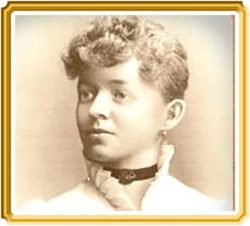 Gyanamata’s love for knowledge made her read and reflect constantly on the thoughts of the world’s deep thinkers — especially religious philosophers and saints. Her main motive was peculiar: “I read because I wanted to be in the company of saints.”
Gyanamata’s love for knowledge made her read and reflect constantly on the thoughts of the world’s deep thinkers — especially religious philosophers and saints. Her main motive was peculiar: “I read because I wanted to be in the company of saints.”
Yogananda later wondered how she “could be so intellectual and at the same time so devotional.”
She developed a strongly independent attitude, letting herself be guided from within: “Later, my own spirit taught me intuitively, and I was freed from some of the worst dogmas of our church, such as the belief in hell.”
Here is a question: will anyone without an independent spirit ever rise above the average norm of society, of religion, or even of good spiritual organizations? It seems that all saints are inwardly completely independent.
At any rate, already in those years Gyanamata (then still called Edith D’Evelyn) had come to an important conclusion: “Religion consists solely in realization.”
She was a devout Christian, and that aura never left her. However, as we have seen, she was far from being an orthodox, narrow, or mainstream believer.
Marriage
Yogananda pointed out that Sister Gyanamata “had worked out her own karma completely in her last life and in this life.” In this life, then, her remaining karma perhaps concerned marriage.
However, she had been uninterested in romance during her entire adolescence, but in time the karmic arrow struck, and she fell in love: the lucky man was Clark Prescott Bissett, a young theology student who was conducting summer services in Madelia, in the Episcopal church she attended. Reverend Mr. Bissett and was “loved by all”, being, as Gyanamta described him, “the soul of kindness”.
Their love finally resulted in marriage in 1899, when she was 30 years old, he was 34. Gyanamata attracted a high soul as her partner: unknown to all, Mr. Bissett was, Yogananda later revealed, “a great man of God.” He was able to predict his own death at a time of perfect health.
A “great man of God”, then, married a great woman of God. Yogananda said of her: “I have searched her life, and have found there not a single sin, not even of thought.” (The New Path, Swami Kriyananda)
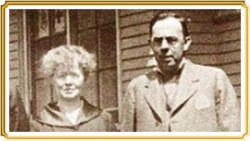 Soon after their marriage, Mr. Bissett changed his vocation, entering law school. It might have been then that they moved to Seattle. He finally became a successful lawyer, a university professor, and an author of acclaimed books on President Lincoln, which can still be found today. Gyanamata with her brilliant mind helped him to write many of his speeches.
Soon after their marriage, Mr. Bissett changed his vocation, entering law school. It might have been then that they moved to Seattle. He finally became a successful lawyer, a university professor, and an author of acclaimed books on President Lincoln, which can still be found today. Gyanamata with her brilliant mind helped him to write many of his speeches.
Their only son Clark Prescott Bissett, Jr., lovingly called “Rex” (King), was born in 1900. Being a mother is an experience of extraordinary love, but is certainly not always easy; Rex developed, for example, an “extreme case of nervousness” which must have been difficult for Gyanamata to bear witness to.
In addition, Gyanamata and her husband lovingly adopted a homeless teenage girl who was bedridden with arthritis. That too must have been quite a challenge.
Being a daughter is not also always an easy task: her relentlessly demanding mother came to live with them. It was a constant training in patience.
Over 30 years of marriage passed for Gyanamata in this way before she entered her Guru’s ashram.
From 1909 she began to read yogic texts like the Upanishads, the Bhagavad Gita, and writings about great Indian saints. After the first such book struck her deeply she observed: “I shall never be the same again.” That seems to indicate some deep Indian samskaras.
A special reputation spread among Mr. Bissett’s learned friends: Gyanamata was hard to beat in any philosophical debate; often they, respected scholars in their fields, had to admit defeat. Her intelligence, knowledge and wisdom were simply too penetrating.
Then, lo and behold, the famous Rabindranath Tagore came to be a dinner guest at her distinguished home in Seattle. But still, all this was but a prelude to the major event of her life…
Meeting Yogananda
In Oct. 1924, Yogananda arrived to lecture in Seattle. Gyanamata chose not to attend, to avoid creating unfavorable consequences for her husband’s position as a professor. She sent her son Rex to attend, asking him to teach her what he had learnt. However, she writes in one letter that she “saw him” (Yogananda), defining that moment as the beginning of her discipleship.
The next year Yogananda returned to Seattle. On Sunday July 12, 1925, a week after her 56th birthday, Rex invited Yogananda for dinner at the family home.
Outwardly, decorum was certainly maintained. But her inward experience must have been that of an erupting volcano. She had finally, personally, come into contact with her Guru. Meeting Yogananda meant a complete revolution of her life. He was “the answer to [her] prayers and longing.” There was an “instant recognition between guru and disciple”; an ancient and deep spiritual relationship surfaced.
She, a deeply Christian woman, recognized him, a Hindu Swami, as her link to God. Her devotion became mightily enflamed during that magical moment of awakening.
After dinner the Master and Gyanamata went upstairs to meditate. He helped her to hear the sacred sound of AUM, which he described as the Holy Ghost. Bliss and true wisdom started to permeate Gyanamata’s consciousness.
Whether she received Kriya Yoga during that first meeting is not mentioned. But it would seem so, as she wrote him in a letter only one week after their first meeting: “I now wish to approach that Self, by a systematic effort, by the method taught by you.”
In fact, after that meeting, five years passed before she was able to see Yogananda again. Would he have withheld Kriya from her, for all those years?
 At any rate, as a sign of her deep devotion, she kept a vase of orange flowers on the floor, at the very spot where Yogananda had stood in her room. Like her mother, she was definitively unconventional: imagine entering a room and seeing a vase in the middle of the floor.
At any rate, as a sign of her deep devotion, she kept a vase of orange flowers on the floor, at the very spot where Yogananda had stood in her room. Like her mother, she was definitively unconventional: imagine entering a room and seeing a vase in the middle of the floor.
From that very first meeting onward, Yogananda called her “Sister”. Given this fact, it seems especially worthwhile to contemplate the fact that she didn’t abandon her husband to live a monastic life at Mt. Washington, at her Guru’s feet, which must have held an extremely powerful attraction for her. Instead she stayed home and continued taking care of her husband, son (Rex by then, however, was already 25) and elderly mother.
Her life, at any rate, now completely changed. The saint in her reawakened. She soon saw the inner star in the spiritual eye. Her consciousness began to absorb the eternal wisdom of God.
Inwardly she followed Yogananda everywhere he went on his tours and wrote him letters. She built up an intensely strong inner contact with him. The Master, to her, was ever near, ever present.
However, she regularly suffered from migraines and other physical problems. In 1930 her health deteriorated dangerously with an enlargement of the heart, hardening of the arteries, and a blockage in the left kidney. The doctors pronounced that they had little hope of her surviving. She was death-bound.
But she had already developed unshakable faith in her Master, which is why he was able to heal her. She was indeed saved, as she often explained, through Yogananda’s “healing vibrations”.
Perhaps as a consequence of her alarming disease, in 1930 she and her husband Clark moved to La Jolla, California, 116 miles (186 km) from Yogananda’s ashram at Mt. Washington. Whenever he wasn’t touring Gynamata was there, sitting at her Guru’s feet.
In late Sept. 1931, aged 62, she finally came to live permanently at Mt. Washington. The story, which Yogananda himself tells, is amazing: her husband Mr. Bissett accompanied her and asked the Master: “Would you keep her now? Sister wants to come very much.” Yogananda asked: “What about you?” Mr. Bisset replied: “I am going to go in three months.” “Have you any disease, any trouble?” “Not at all,” he answered, “but you will see me go.” His words came true: Mr. Bisset prophetically left his body on Jan. 09, 1932. Being a prominent professor emeritus, his demise was announced in the New York Times the following day.
Three months before his passing would be Oct. 09, 1931. But since Yogananda started a month-long lecture tour in Salt Lake City on Oct. 03, 1931, (plus, taking travel time into consideration), the moment when Mr. Bisset brought Gyanamata to Mt. Washington must have been in late September 1931.
By the way, renunciation and impersonal wisdom didn’t make Gyanamata cold or unhuman: she writes about “the agony [I] was in after the death of Mr. Bissett.” Their love must have truly been deep and lasting.
July 20 1932 was a highly important date for her: she became a nun, taking vows of sannyas (Durga Mata writes that it occurred already on July 20, 1931). At that ceremony, Yogananda gave her the name Gyanamata. Mrs. Bissett, as she had been known so far, now became Sister Gyanamata. A new name, a new era!
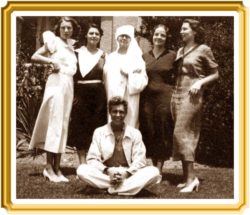 As an aside: very interestingly Yogananda gave a monastic name only to Rajarsi Janakananda, Sister Gyanamata, and Durga Mata (originally “Ma Durga”). All the others the Guru called by their birth name: Daya Mata was “Faye” throughout, Mrinalini Mata was “Merna”, Tara Mata was “Laurie”, Brother Anandamoy was “Henry”, Brother Bhaktananda was “Michael”. Virginia Wright was called “Mataji” (Mother) by Yogananda, but after his passing she took the monastic name Ananda Mata. In other words, all of them received their monastic names not from Yogananda, but after his passing. It is interesting to contemplate: is there any special meaning behind the distinction Yogananda made?
As an aside: very interestingly Yogananda gave a monastic name only to Rajarsi Janakananda, Sister Gyanamata, and Durga Mata (originally “Ma Durga”). All the others the Guru called by their birth name: Daya Mata was “Faye” throughout, Mrinalini Mata was “Merna”, Tara Mata was “Laurie”, Brother Anandamoy was “Henry”, Brother Bhaktananda was “Michael”. Virginia Wright was called “Mataji” (Mother) by Yogananda, but after his passing she took the monastic name Ananda Mata. In other words, all of them received their monastic names not from Yogananda, but after his passing. It is interesting to contemplate: is there any special meaning behind the distinction Yogananda made?
By the way, the sister vows are beautiful to visualize: in those days, whenever a new sister took her monastic vows, the other sisters “all joined hands around Master, while we repeated the vow after him.” (Durga Mata’s book). Imagine that magical circle of love and devotion around him, hand in hand.
Living with Yogananda
Very soon after Gyanamata’s arrival Daya Mata also joined Mt. Washington, in November 1931. What a celebration of souls! That year, in fact, marked the beginning of the SRF monastic order.
Only two months later, in January 1932, Yogananda met St. Lynn. It was obviously a glorious time for the Master’s work. During that period he also met his second most highly advanced male disciple: Oliver Black.
At any rate, a new phase of Gyanamata’s life had definitively started, as a member of her Master’s ashram. It was a blessing that lasted for 20 devoted years.
Perception of her Guru
Here we come, perhaps, to the most important element of what Gyanamata, as a role-model, transmitted to all other disciples: the proper attitude towards, and correct perception of, the Guru.
In the Autobiography of a Yogi Yogananda describes his constant awareness of Sri Yukteswar’s divine stature:
“I was conscious always that I was in the presence of a living manifestation of God. The weight of his divinity automatically bowed my head before him.”
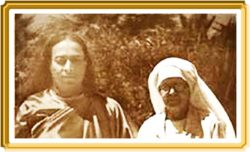 Gyanamata had exactly the same perception of Yogananda. She perceived him as “God in man made manifest.”
Gyanamata had exactly the same perception of Yogananda. She perceived him as “God in man made manifest.”
In other words, she realized that he was not only a great Master, but a divine incarnation: he was the Eternal Spirit manifesting, acting, speaking through a human form. Yogananda was – as he himself said – an avatar. Few, however, were able to recognize his pure divinity. But Gyanamata did.
In fact, she compared herself to Simon Peter, who, among all apostles, realized who Jesus was: “Thou art the Christ, son of the living God.” (Mat, 16:16) She wrote to Yogananda: “In the same way I know you.”
For that reason she addressed him in her letters sometimes as “Son of God”, “your Holiness,” or “Guru-Lord”. She wrote him: “The awareness of the height of your God-conscious state never leaves me for a moment.”
To other disciples she explained: “I am strong only in one thing—devotion to my Master.”
Today all disciples may contemplate and absorb her wise counsel: “Keep ever before your mind his divinity, his God-conscious state. He is God in man made manifest… He, the Master, is the vehicle through whom God flows to you.”
It was not a one-sided devotion. In a lecture Yogananda said: “She is a goddess. She and I are one.” He held her, “the greatest woman disciple”, in the highest esteem – his love for her was immense. Yet their relationship, in contrast to the one between the Master and Rajarsi, remained outwardly formal. Yogananda finished his letter with words like, “sincerely yours, Swami Yogananda”.
Silent contact with the Guru
In the Autobiography of a Yogi, Yogananda describes how his relationship with his Guru was quite wordless:
“My relationship with Sri Yukteswar, somewhat inarticulate, nonetheless possessed all eloquence. Often I found his silent signature on my thoughts, rendering speech inutile.”
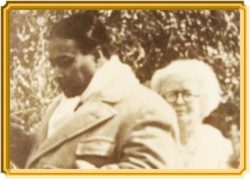 This perfectly reflects the relationship between Gyanamata and Yogananda. The Guru said, “I saw Sister very little, but spiritually I was always with her.”
This perfectly reflects the relationship between Gyanamata and Yogananda. The Guru said, “I saw Sister very little, but spiritually I was always with her.”
When they saw each other, she usually stood up, remaining silent. They communicated on the thought level, sending thoughts “through the ether”, which, as Yogananda explained, is possible at a certain stage of spiritual development. Words between them were quite superfluous and superficial.
“Dear Children,” she once wrote to some of the younger nuns, “Yesterday you put the question, ‘What is the last word in discipleship? What would be the distinguishing mark of the perfect disciple?’ You know that I am always quiet when in the presence of the Master. This is not a pose, intended to win his approval, nor is it altogether because I know this to be the proper way to behave. It is because I have an inner feeling of stillness. I seem to be listening intently. So his words sink into my mind and heart to be pondered upon, sometimes for years. Because of this, I often get the answer to a mental question in his very words.”
One is reminded of a question Yogananda was asked about Rajarsi, why he progressed so quickly on the spiritual path. The Guru answered: “He knows how to listen.”
What was meant is not an authoritarian “Listen to what I am telling you!” Rather the wise advice is, “Listen subtly, inwardly, to what I am thinking.”
Inner listening, constant attunement, sincere love and loyalty: these could be called the keys to discipleship.
The inner communication and silent closeness between Yogananda and Sister Gyanamata serve as a golden example for all disciples today: such a relationship can be established by everyone, through sincere inner attunement, during silence and in activity, through constant asking, praying, loving.
In his poem, When I am only a Dream (originally called I come to tell you all of Him), Yogananda described how he would guide his devotees from within, once he was gone:
“…To those of you who have asked me
to guide you to my Beloved’s presence:
I will warn you
Through my silently talking mind,
Or speak to you
Through a gentle significant glance,
Or whisper to you
Through my love,
Or loudly dissuade you
When you stray away from Him….
And I will whisper to you
Through your conscience,
And I will reason with you
Through your reason,
And I will love
Through your love….”
A divine covenant with God
Not long after she had come to live at Mt. Washington, Sister Gyanamata was going through a major physical ordeal. Yogananda “could hear her heart pumping just like a bellows, even from the door.” It was a close call with death. The Guru commented, “I was very frightened, and I called on God.”
In her perfect wisdom she remained completely calm, with unshakable trust. She was lying down, gasping for breath, telling him, “Don’t pray for me. Don’t trouble yourself. Just bless me.”
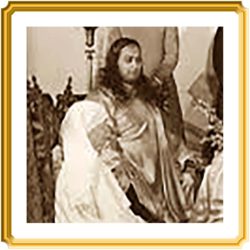 These words touched Yogananda to his core: “Tears rolled down my cheeks.” “Sister,” he answered passionately, “Heaven is with you, and I beg your life from God.” At these intense words, she immediately became well, breathing normally. It was a healing miracle.
These words touched Yogananda to his core: “Tears rolled down my cheeks.” “Sister,” he answered passionately, “Heaven is with you, and I beg your life from God.” At these intense words, she immediately became well, breathing normally. It was a healing miracle.
A second miracle followed: “I made a covenant with God for her life, and I knew she would not go until I prayed for her release.”
In other words, Gyanamata, who for the next twenty years often suffered severely from ill health, was surviving exclusively by the wish and will of her Master. Her life now was an ongoing matter of pure grace.
Her unseen service of love
In the Autobiography of a Yogi we read how a high yogi can take onto his body the karmic burdens of others:
“Fortunately for his disciples, Sri Yukteswar burned many of their sins in the fire of his severe fever in Kashmir. The metaphysical method of physical transfer of disease is known to highly advanced yogis. A strong man can assist a weaker one by helping to carry his heavy load; a spiritual superman is able to minimize his disciples’ physical or mental burdens by sharing the karma of their past actions. Just as a rich man loses some money when he pays off a large debt for his prodigal son, who is thus saved from dire consequences of his own folly, so a master willingly sacrifices a portion of his bodily wealth to lighten the misery of disciples.”
Concerning Gyanamata, Yogananda recounts: “I was extremely grieved that I had asked the Father to spare a life which I later found was to be constantly tested by physical suffering.” For example, as we read in God Alone, at a certain point her hands got crippled. The majority of her days were marked by pain. It sometimes drove her to her limits, as one can see in a letter. Yogananda admitted: “I would not have asked the Father to spare her life had I known then she was to be tested so strongly.”
Here, however, is the crucial point: Yogananda explained that “I knew she suffered not for her own, but only for the sins of others…. She had been suffering because of the sins of many others who became saintly through her life. There was not a sin of her own I could find.”
In other words she took onto her own body, as Yogananda put it, “the terrible karma of others.” Given the sheer amount of her ordeal, described by Yogananda as a “nightmare of suffering”, we see that she fearlessly took onto herself a massive quantity of others’ burdens, for 20 years.
This, then, seems to be a distinguishing mark of her devoted life: selflessly shouldering enormous weights of karma from other disciples, invisibly and unnoticed. It is unparalleled among Yogananda’s flock of disciples.
Her life, then, can only be called heroic. She truly deserves all our admiration, gratitude and commemoration for her herculean service of love.
Yogananda in India: Gyanamata as Vice-President
In his Autobiography of a Yogi, Yogananda informs us:
“In March 1935 I had the Self-Realization Fellowship chartered under the laws of the State of California as a non-profit corporation.”
In other words, his organization, Self-Realization Fellowship was officially born and registered as a Church. Yogananda of course was the President. He selected Sister Gyanamata as the Vice-President. What wiser choice could there have been? Rajarsi was unavailable.
Already in 1933 the Guru had made Gyanamata his representative, writing to her: “Please let everybody know that in my absence you are the spiritual head of the institution, and everybody should obey your wishes, for I know they are impartial and God-directed. Since you represent me and my wishes as truly as ever anybody has done, I have implicit confidence in your actions and judgement. You have satisfied all the critical scrutiny of my divine standard…I cannot tell you what a relief it has been since you have been there. I needed somebody at Mt. Washington to interpret me rightly to those who cannot contact me. Heaven will bless you for this. Your salvation is an accomplished fact.”
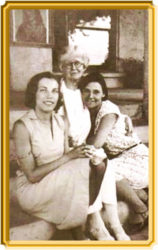 From June 1935, when Yogananda left to India for one and a half years, Gyanamata basically served as the acting President of SRF, with Durga Mata as her right-hand support. It was a “Presidency” of deep wisdom, but certainly also of motherly care and love, as we can see on the above photo.
From June 1935, when Yogananda left to India for one and a half years, Gyanamata basically served as the acting President of SRF, with Durga Mata as her right-hand support. It was a “Presidency” of deep wisdom, but certainly also of motherly care and love, as we can see on the above photo.
Daya Mata indeed describes how Sister Gyanamata “was like a mother to all of us young devotees here.” Maybe for that reason Yogananda described her as the “guardian angel of Mt. Washington.”
When the Guru returned, Sister Gyanamata ceremoniously presented to him the Encinitas hermitage, which St. Lynn had generously built as a gift of love. We read in the Autobiography of a Yogi:
“‘A surprise, sir! During your absence abroad we have had this Encinitas hermitage built; it is a ‘welcome-home’ gift!’ Sister Gyanamata smilingly led me through a gate and up a tree-shaded walk.”
Her constant home in Encinitas
Soon afterwards, “in early January 1937” (Durga Mata), the Guru put Sister Gyanamata in charge of the Encinitas hermitage. From that moment on, aged 67, to the end of her life, she stayed there, for almost 15 years, receiving guests, acting as a spiritual counsellor, teaching Sunday School, and filling the place with everlasting blessings and vibrations.
From 1937 Yogananda frequently came to stay at Encinitas to work on his main opus, the Autobiography of a Yogi, accompanied by Daya Mata, Ananda Mata, and Tara Mata. From 1945, Dr. Lewis lived there with his wife Mildred and daughter Brenda. From 1946 Rajarsi spent many months each year at the Encinitas hermitage too. Imagine the united saintly vibrations!
Her passing
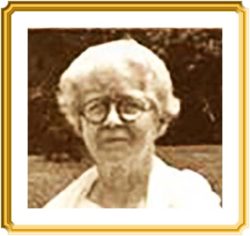 The time came when Sister Gyanamata’s suffering simply became too intense. On Wednesday, 14 Nov. 1951, Yogananda, who was at Mt. Washington, received a call from Encinitas, that “Sister is suffering awfully.”
The time came when Sister Gyanamata’s suffering simply became too intense. On Wednesday, 14 Nov. 1951, Yogananda, who was at Mt. Washington, received a call from Encinitas, that “Sister is suffering awfully.”
“I began to cry; I began to pray.” His prayer was for her release, ending his divine covenant with God concerning her life. He actually wrote a note to Divine Mother to “break the troth of mine.”
On Thursday evening he arrived at Encinitas.
On Friday “God didn’t let me see her, because He knew I would again pray that she would stay here.” In the evening the Master arranged for a special dinner with the disciples. Unknown to all, it was to celebrate Sister’s passing, as is the custom in India. He knew her end was at hand.
On Saturday 17 he visited Sister for a last time. Then he asked some disciples to drive him around Encinitas in the car, but “not too far.” He needed to be a bit distant. Suddenly he exclaimed: “Hurry. Don’t delay me now.” They returned and in fact, Sister had just left her body.
A “tremendous vibration” could be felt throughout her room. Yogananda knew that “everyone who comes here will feel her sweetness ineffable.”
It was a magnificent ending for a truly holy life. Sister Gyanamata’s last words expressed her glorious victory: “Such joy! Too much joy! Oh, too much joy!” Her soul now blissfully mingled with Infinity. Yogananda stated: “I saw her sink into the watchful state of Spirit, beyond creation.” (The New Path). She was free!
The Master spent some time alone with her body. Then Daya Mata and others came in. He told them to feel the temperature of her feet, which were very cold. Then he asked them to feel the top of her head. It was astounding: it was very hot, as if on fire. The Guru explained: “This shows that she has left the body in the highest state of samadhi. Her soul departed through the highest spinal centre, the thousand-petaled lotus in the brain. Now she has achieved that final state of mukti. She is free. She has no need to return to this world. But we will meet again.”
Later Yogananda told the public: “Indeed a great saint has gone away from this hermitage. Yet at the same time, she has left spiritual footprints in that room forever, for all souls that are in despair, that they might trace her footsteps again and go from the desolate shore of this earth to my Father’s home. Those spiritual footprints will always be there.”
Her body lies buried at the Forest Lawn Memorial Park at Glendale, not far from her beloved Guru. But that, of course, is not where she really is. Her consciousness is blissfully united with God, riding on eternal waves of bliss. And that is where her footprints can lead us all.
Being a saint, she can always be invoked, and her grace can forever be felt. Her saintly footsteps remain always here to be followed, and her love, blessings, and guidance are fully available to all, through prayer.
Dear Sister Gyanamata,
You are the
ever-living, ever-free, ever-wise mother
of Yogananda’s large spiritual family.
We bow to you with love and gratitude.
